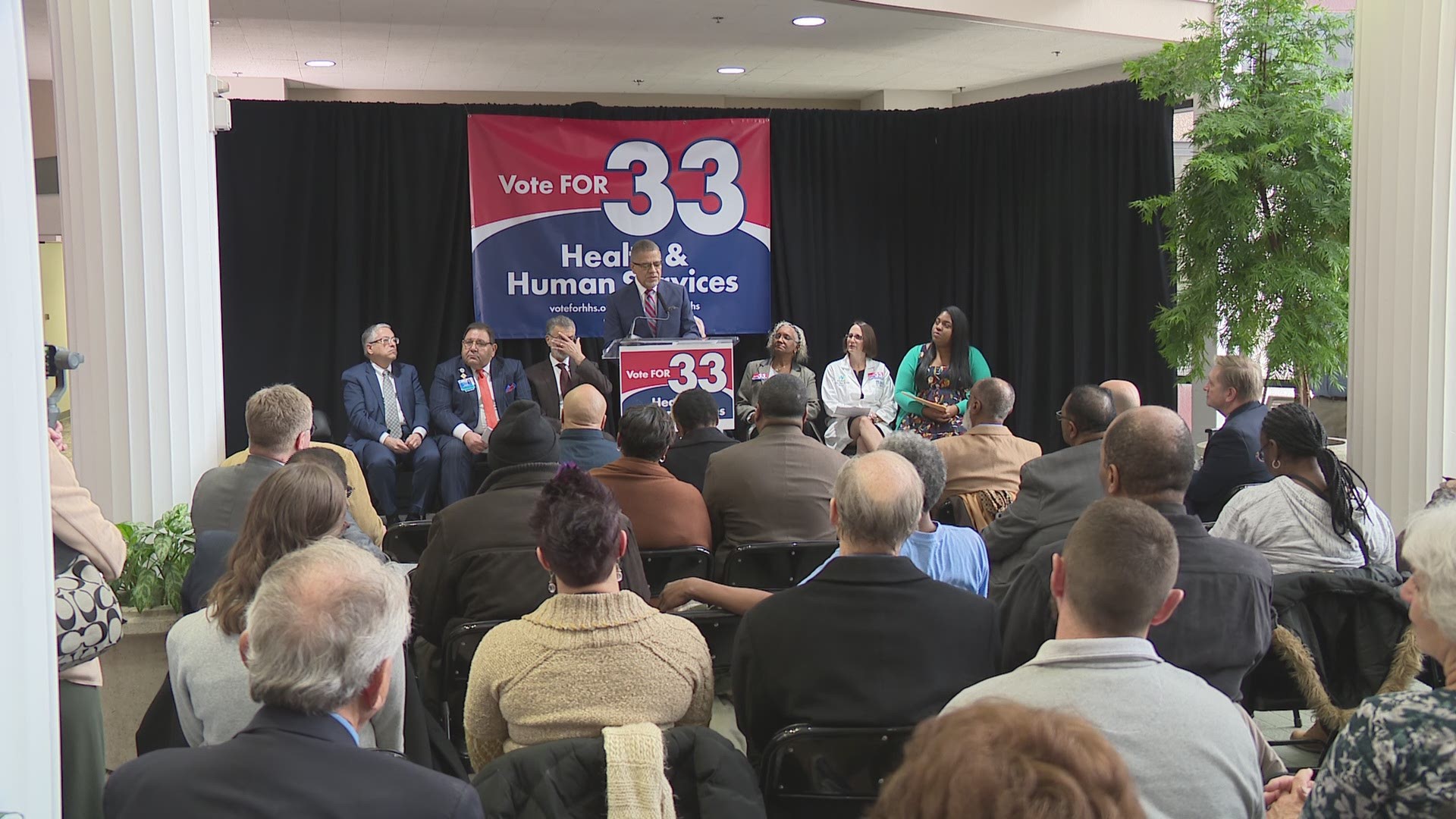CLEVELAND — Government leaders from the city of Cleveland and Cuyahoga County gathered together on Wednesday morning to start the campaign to pass Issue 33, which will be on the 2020 Primary Election ballot.
Issue 33 is a replacement Health and Human Services property tax levy of 4.7 mills. Under Issue 33, property owners in Cuyahoga County would pay an additional $41 a year for every $100,000 in property value— a little less than $3.50 per month.
“Health and Human Services help keep people alive, healthy and functioning, and are the most critical and direct local investment that we make in each other,” said Cuyahoga County Executive Armond Budish. “More than one out of three Cuyahoga County residents rely on our Health and Human Services system every year, and the need for these services is growing.”
Issue 33’s leaders attributed the need for additional health and human services funding to four primary factors:
- Protracted Poverty: Cleveland is now the second-poorest major city in the country, and one out of five Cuyahoga County residents live in poverty, which for a family of three is an annual income of $21,330 or less. And unlike much of the U.S., poverty in Cuyahoga County has increased since the Great Recession.
- The Opioid Epidemic: The rate of opioid-induced deaths in the county is 2.5 times the national average; in the City of Cleveland, it is five times the national average. Since 2016, opioid addiction among parents has caused the number of children in Cuyahoga County who are in foster care or under protective supervision to grow by nearly 70%—nearly 1,500 additional children.
- Demographic Challenges and Needs: Cuyahoga County is now home to more residents who are over 60 than are under 20. Several age groups of county residents—including infants, working-age adults and older adults 65-74—have mortality rates higher than the state average. In 2017, neonatal infant mortality for all children born in Cuyahoga County was worse than it was in many impoverished countries.
- Insufficient Federal and State Support: Successive federal and state administrations have reduced their contributions to the Health and Human Services safety net. Ohio’s funding for children’s services remains the lowest in the nation, even as the number of children in government custody has skyrocketed.
“Diseases don't discriminate. Traumatic injuries and economic setbacks can happen to anyone. Issue 33 is an investment in helping people bounce back from these challenges and build better lives for themselves and their families.” Cleveland Mayor Frank Jackson said.

